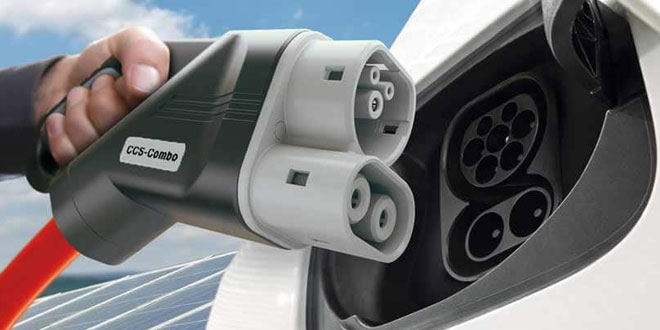New Delhi: With environmental concerns growing globally, switching to alternative green energy for transportation is the need of the hour. According to experts, in India as well, there is an increased need to prepare for a green future and going electric is one of the ways to curb the increasing air pollution levels in many parts of the country and to combat climate change. While the Indian Electric Vehicles (EVs) Industry is still in its nascent stages, experts say that in a country of 1.3 billion people, with majority being the youth, electric driving is likely to be ‘The Next Big Thing’. There is a push from the government, new players are entering the EV sector, and the demand is increasing. According to experts and can also help the country reduce its.
Not only can electric mobility can help in reducing carbon emission, but can also reduce the country’s dependence on imported crude oil, say Energy Alternative India (EAI), a consultant and market research firm in electric mobility and clean energy sector. In case you want to ditch your polluting vehicle for a cleaner one, we bring to six important terms related to EVs that you must know before buying an electric vehicle.
Also Read: India’s Push To Go Electric: Five Places Where Non-Polluting Electric Vehicles Have Been Deployed
Battery Electric Vehicle (BEV)
A BEV is any type of electrically powered vehicle like rickshaws, bikes, scooters, motorbikes, cars, buses, and trucks. These are also called Zero-emission vehicle (ZEV). These vehicles are powered only by batteries, are charged using a charging cable, and never use petrol/ diesel or combustion engines. Mahindra Electric is a leader in manufacturing electric cars, as per NITI Ayog and Hero Electric is a popular brand for electric scooters with almost 50 per cent of market share.
Hybrid Electric Vehicle (HEV)/ Hybrid Vehicle (HV)
HEVs or HVs are the vehicles which run on the fossil fuel combustion engines but also have a small electric motor attached with it in order to increase the efficiency of the fuel in terms of the distance travelled per litre of fuel as it switches to electric mode at low speeds. These cannot run off electricity alone. In hybrid technology, Toyota and Honda are popular names producing hybrid cars, as per Automotive Research Association Of India (ARAI). There are no two-wheelers in this category as a two-wheeler cannot support both, the engine and the motor due to the lack of space.
Also Read: India’s Push To Go Electric: Meet Five Start-Ups Who Are Riding The Electric Vehicle Wave
Plug-In Hybrid Electric Vehicle (PHEV)
PHEVs use electricity and fossil fuel but are different from HEVs in terms of the usage of the two kinds of powers. These have a proper battery pack and an electric motor just like a pure electric vehicle, a fuel tank, and an internal combustion engine. For shorter distance, these vehicles can run on electrical power and can be switched to combustion-mode in case one needs to make long journeys. The batteries can be recharged by plugging-in using a charging cord and the tank can be refilled. Volvo with its XC90 in India is a player in this segment.
Low-Speed Vehicle (LSV)
LSVs are electric vehicles that have a speed limit of 25 miles per hour (40 kilometre per hour). An LSV battery recharges easily by plugging into any outlet. Low range electric scooter, golf carts, and electric rickshaws are such vehicles.
Also Read: Buying Guide: Things You Must Know About Electric Vehicles
Battery Pack
Battery pack is the energy storage system in which cells are assembled to form a power pack. In India, the cells are imported mostly from China and Brazil and then assembled into power packs locally, as per EAI. Smaller and lighter batteries like Lithium Ion battery reduce the weight of the vehicle and also improve its performance but are expensive. The Led-Acid battery vehicles, on the other hand, are heavier, have low-range and are cheaper in cost. Other rechargeable batteries which can be used in electric vehicles are nickel–cadmium, nickel–metal hydride, Li-ion polymer, zinc–air, and molten-salt batteries. However, currently in the EV industry the use of led acid batteries and lithium ion batteries is more popular.
Range anxiety
‘Range anxiety’ is the anxiety on the part of the person who drives or wants to drive an electric vehicle. The anxiety is that the battery will run out before the destination or a suitable charging point is reached. According to the spokesperson of Mahindra Electric, this is one of the biggest problems with attitudes towards electric vehicles especially electric cars.
Also Read: India’s Push To Go Electric: How Is The Country Pushing For E-Mobility
NDTV – Dettol Banega Swachh India campaign lends support to the Government of India’s Swachh Bharat Mission (SBM). Helmed by Campaign Ambassador Amitabh Bachchan, the campaign aims to spread awareness about hygiene and sanitation, the importance of building toilets and making India open defecation free (ODF) by October 2019, a target set by Prime Minister Narendra Modi, when he launched Swachh Bharat Abhiyan in 2014. Over the years, the campaign has widened its scope to cover issues like air pollution, waste management, plastic ban, manual scavenging and menstrual hygiene. The campaign has also focused extensively on marine pollution, clean Ganga Project and rejuvenation of Yamuna, two of India’s major river bodies.






























